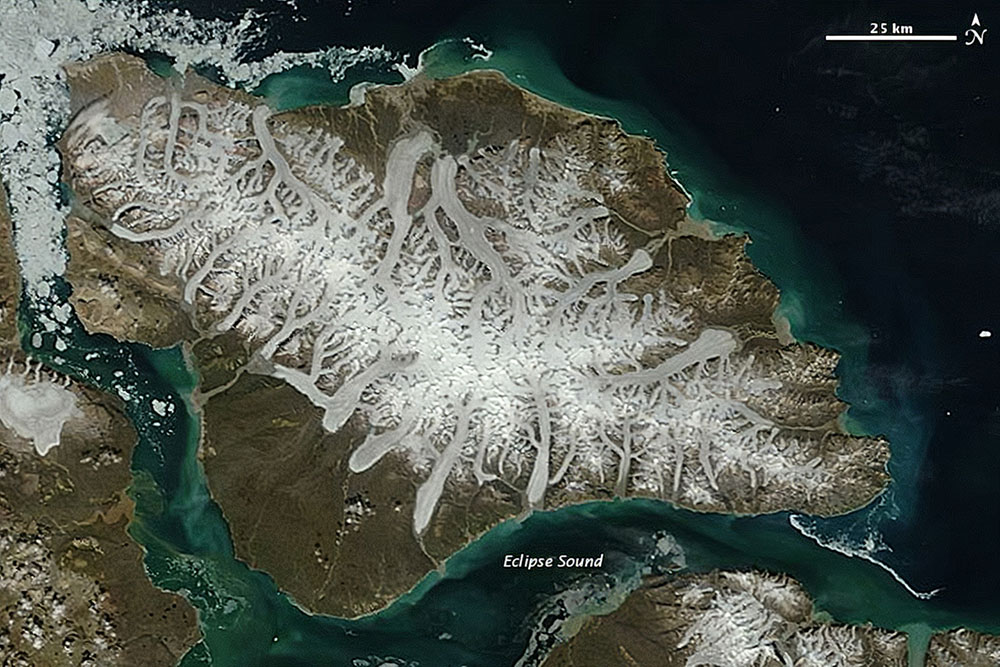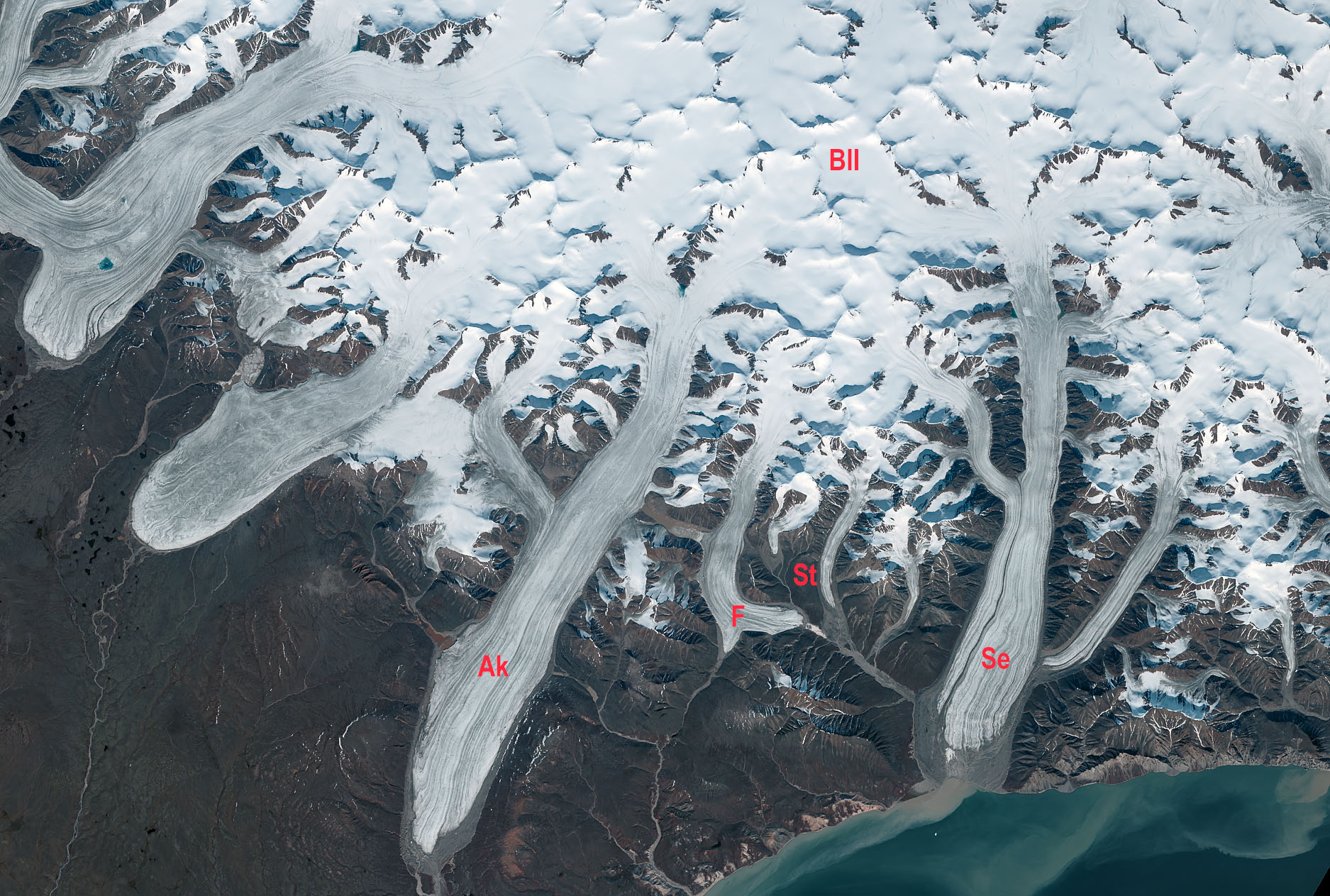Introduction and satellite imagesBylot Island is an 11,000-square-kilometer (4,200-square-mile) island, located in the province of Nunavut in the Canadian Arctic, between 72.5 and 74 degrees North. It lies east of northern Baffin Island, from which it is separated by Eclipse Sound. The island is dominated by the NW-SE-trending Byan Martin Mountains which reach 1900 metres in height. They are made of resistant Archaean-Proterozoic metamorphic and igneous rocks, and are bordered by plains of softer Cretaceous and Tertiary sedimentary rocks. The island is named after the British explorer Robert Bylot, who discovered it in 1616. |
 Overview of Bylot Island, Moderate Resolution Imaging Spectroradiometer (MODIS) image on NASA’s Terra satellite, July 22, 2012. |  Glaciers of the expedition area:
Fountain Glacier (F), Stagnation Glacier (St), Sermillik Glacier (Se), Aktineq Glacier (Ak) and Bylot Island Icefield (BII). Landsat image no. LC80330082013221LGN00_B1_B2_B3_TIF, August 2013 | | |